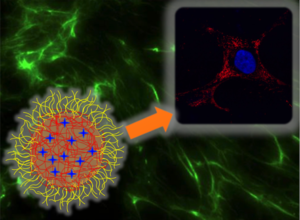Special seminar: Dr Tristan Clemons – Multifunctional polymeric nanomaterials for biomedical applications
Speaker: Dr Tristan Clemons,1Department of Chemistry & the Simpson Querrey Institute, Northwestern University, Evanston, Illinois 60208, USA; 2School of Molecular Sciences, The University of Western Australia, Crawley, Western Australia.
Host: A/Prof Liz New [Map]
Nanoparticle based drug delivery systems provide a number of unique advantages over traditional therapies, especially in the areas of targeting, multimodal imaging, therapeutic protection and controlled release of drugs. In my seminar I will present on a nanoparticle based system produced from poly(glycidyl methacrylate) (PGMA) through an oil-in-water emulsion process. The epoxide functionality of the polymer allows for multiple modifications of the nanoparticle surface while the emulsion process for synthesis allows for hydrophobic drug internalisation. This nanoparticle platform has been modified and used for a number of different applications which will be highlighted in the first part of this presentation, including:
- Surface modifications to achieve rapid cell uptake, a ‘stealth’ like quality and active targeting to the epidermal growth factor receptor (EGFR),
- DNA and peptide drug loading in the nanoparticle polymer corona for applications in cancer and cardiovascular injury respectively,
- Magnetic capabilities along with drug delivery from the core of the PGMA nanoparticles exploited for applications in wound healing.
The second part of the talk will present on peptide amphiphile (PAs) based biomaterials. PAs are an exciting material designed to self-assemble into high aspect ratio nanofibers capable of mimicking the body’s natural extracellular matrix. PAs can easily be modified to display an array of bioactive epitopes to promote tissue regeneration. Despite this, the PA assemblies alone are relatively weak and difficult to use in the development of larger biomaterials. In this work, we have functionalized the PA with host-guest moieties, which form complexes through strong non-covalent intermolecular interactions. These hydrogels are also notably more viscous without interfering with normal cellular function, a key consideration for replacing lost tissue structure. This work investigates the application of host-guest crosslinking to PA hydrogels in order to further their application in regenerative medicine and 3D bio-printing applications.

Short Biography – Dr Tristan Clemons completed his PhD studies in 2014 as apart of the BioNano research group lead by Iyer Swaminathan at the University of Western Australia (UWA). Following this Tristan was successful in obtaining a NHMRC Peter Doherty Australian Biomedical Research Fellowship with the Fiona Wood Foundation research team where his work involved investigating nanomaterial applications for wound healing and scar treatments following burn injuries. Tristan is currently an American Australian Association post-doctoral research fellow in Chicago at Northwestern University in the laboratory of prof. Samuel Stupp. Tristan has won a number of awards including the Exxon Mobil WA Student scientist of the Year for his PhD work, a WA young Tall poppy Science Award (Australian institute of policy and science) and recently was acknowledged by the WA Business News with the 40 under 40 people’s choice award and as a CAS SciFinder Future Leader of chemistry in 2018.

